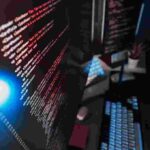In today’s digital world, we are constantly surrounded by multimedia — images, videos, and audio shared across platforms like Instagram, YouTube, WhatsApp, and more. But with the growing capabilities of editing tools and AI-powered applications, it’s becoming increasingly difficult to distinguish between what’s real and what’s fake.
That’s where Multimedia Forensics steps in — a powerful branch of digital forensics designed to authenticate digital media and detect signs of manipulation. From verifying viral news images to investigating cybercrimes, multimedia forensics plays a crucial role in today’s digital investigations.
What is Multimedia Forensics?
Multimedia Forensics is a field of study and application that involves analyzing digital multimedia content — such as images, videos, and audio — to verify their authenticity, origin, and integrity. It helps identify if a digital file has been altered, manipulated, or forged.
This field is crucial in:
- Criminal investigations
- News verification
- Legal evidence validation
- Cybersecurity
- Fake news and misinformation detection
- Intellectual property protection
Unlike traditional forensic science, which deals with physical evidence, multimedia forensics focuses solely on digital files — the pixels in a photo, the metadata of a video, the waveform of an audio clip, etc.
Why Do We Need Multimedia Forensics?
Let’s understand the real-world significance with a few examples:
- Fake News Images: Doctored images can be used to spread political propaganda or communal hatred.
- Court Evidence: A tampered CCTV video could lead to wrongful convictions or acquittals.
- Corporate Espionage: Audio recordings can be edited to leak confidential information or blackmail executives.
- Celebrity Scandals: Deepfakes can be used to frame public figures with fake videos or audio.
Multimedia forensics gives us the tools and scientific methods to examine whether such media is genuine or fake.
What are the Approaches to Multimedia Authentication?
There are two major approaches to multimedia authentication:
- Active Image Authentication
- Passive Image Authentication
Both have different goals, techniques, and real-world use cases. Let’s understand them one by one.
Active Image Authentication
This approach involves embedding information directly into the media file at the time of its creation, which can later be used to verify its authenticity.
Common methods include:
1. Watermarking
Digital watermarking involves embedding a unique identifier or code into the image or video (invisible to the naked eye) that can be used later to prove originality.
- Robust Watermarking: Resistant to changes like compression or resizing.
- Fragile Watermarking: Breaks when any part of the media is altered — ideal for tamper detection.
2. Signatures or Hashing
In this method, a cryptographic hash (like SHA-256) is generated for the original media. If the hash changes later, it indicates tampering.
Example: If a CCTV camera signs every video frame it records, you can later verify if any frame has been edited by checking the signature.
Advantages:
- Accurate
- Easy to verify if tampering has occurred
- Useful in secure environments (like courts or newsrooms)
Limitations:
- Requires the original file to be embedded or signed
- Cannot work retroactively on media already created or widely circulated without authentication
Passive Image Authentication
Unlike active methods, passive authentication doesn’t require any embedded information. It works by analyzing the media file itself using forensic techniques to find inconsistencies or manipulations.
This approach is much more useful in real-world scenarios, where you often receive a suspicious image without any watermark or digital signature.
Forgery-Type Dependent Techniques
These methods are specifically designed to detect a certain kind of tampering. One of the most popular examples is:
Image-Splicing Detection
Image Splicing is when parts of multiple images are combined to form a single fake image. This is very common in fake news or memes.
For instance, a person’s face may be spliced onto a different body, or a background may be altered to frame a person at a controversial location.
How Splicing is Detected:
- Lighting Inconsistencies: Shadows, reflections, and lighting direction may not match across spliced elements.
- Noise Patterns: Each image has a different sensor noise. Combining them creates noise inconsistency.
- JPEG Compression Artifacts: Spliced parts may have different compression levels.
- Edge Detection: Sharp edges around spliced regions can be analyzed using techniques like Sobel filters or Laplacian methods.
Forgery-Type Independent Techniques
These techniques don’t rely on detecting a specific type of forgery. Instead, they focus on identifying anything unusual or inconsistent in the image, regardless of the manipulation method.
These methods are especially powerful because new types of forgeries emerge every day, especially with AI tools like Photoshop AI and deepfake generators.
Examples of Forgery-Type Independent Techniques:
- Sensor Pattern Noise Analysis: Every camera sensor has a unique noise pattern like a fingerprint. If the noise pattern doesn’t match the claimed source, the image might be fake.
- Color Filter Array (CFA) Interpolation Analysis: CFA artifacts can reveal if the raw image pipeline was broken during tampering.
- Metadata Examination: EXIF data (such as timestamp, GPS, camera model) can be inconsistent or missing in tampered images.
- Resampling Detection: Image regions that have been resized, rotated, or moved can be found using resampling traces.
What are Digital Fingerprints?
A Digital Fingerprint is a unique identifier extracted from digital content. Just like every human has unique fingerprints, every camera, audio recorder, or editing software leaves subtle traces behind.
These fingerprints can help:
- Identify the source device
- Link different media to the same device or software
- Detect whether content has been altered
Types of Digital Fingerprints:
- Sensor Pattern Noise (SPN): Every image sensor (in phones, DSLRs, etc.) produces a unique noise pattern due to manufacturing imperfections. This pattern acts as a fingerprint to trace the camera.
- Compression Fingerprint: Tools like WhatsApp, Instagram, or Photoshop compress images in unique ways. Forensic analysts can detect which software was used.
- Audio Watermarks: Radio broadcasts and streaming services often embed inaudible audio signals to track piracy and usage.
- Video Codec Fingerprints: The way a video is encoded (frame rate, codec type, resolution artifacts) may reveal editing software used.
Role of AI and Deep Learning in Multimedia Forensics
- Convolutional Neural Networks (CNNs) to detect pixel-level inconsistencies.
- DeepFake detectors that analyze facial movements, lip-sync issues, and eye blinking patterns.
- GAN detection algorithms that recognize synthetic image artifacts.
These models are trained on datasets of real and fake media to distinguish manipulation patterns.
Challenges in Multimedia Forensics
- Ever-Evolving Threats: With generative AI tools like Midjourney and Sora, fake content is more realistic than ever.
- Encrypted Media: Apps like Signal encrypt media, making forensic analysis more complex.
- Cross-platform Sharing: Every platform re-encodes images and videos, destroying original metadata.
- Privacy vs Forensics: Collecting fingerprints can raise privacy and ethical concerns.
Applications of Multimedia Forensics
- Law Enforcement: To validate CCTV footage or call recordings in court.
- Journalism: To confirm the authenticity of viral images and videos.
- Cybersecurity: Detect tampered screenshots used in social engineering.
- Social Media Moderation: Flagging deepfakes or misleading content.
- Corporate Investigations: Forensically analyzing internal leaks or surveillance data.
Future of Multimedia Forensics
The future is both exciting and alarming. With quantum computing, deep generative models, and virtual reality, manipulation will become even harder to detect. But the growth of Explainable AI, blockchain for media traceability, and real-time forensic SDKs will help counter these threats.
Governments, tech companies, and law enforcement agencies must collaborate to build global media verification frameworks.
Conclusion
Multimedia forensics is no longer a niche field. It’s becoming essential for everyone — from journalists and cyber investigators to ordinary citizens — to understand and apply basic authentication techniques.
Whether you’re verifying an image before sharing it on WhatsApp, or an analyst reviewing evidence in a cybercrime case, knowing how to spot manipulation can make all the difference.
The war between fake and authentic content is ongoing. But with proper tools, awareness, and forensic knowledge, we can stay one step ahead in this digital battlefield.





